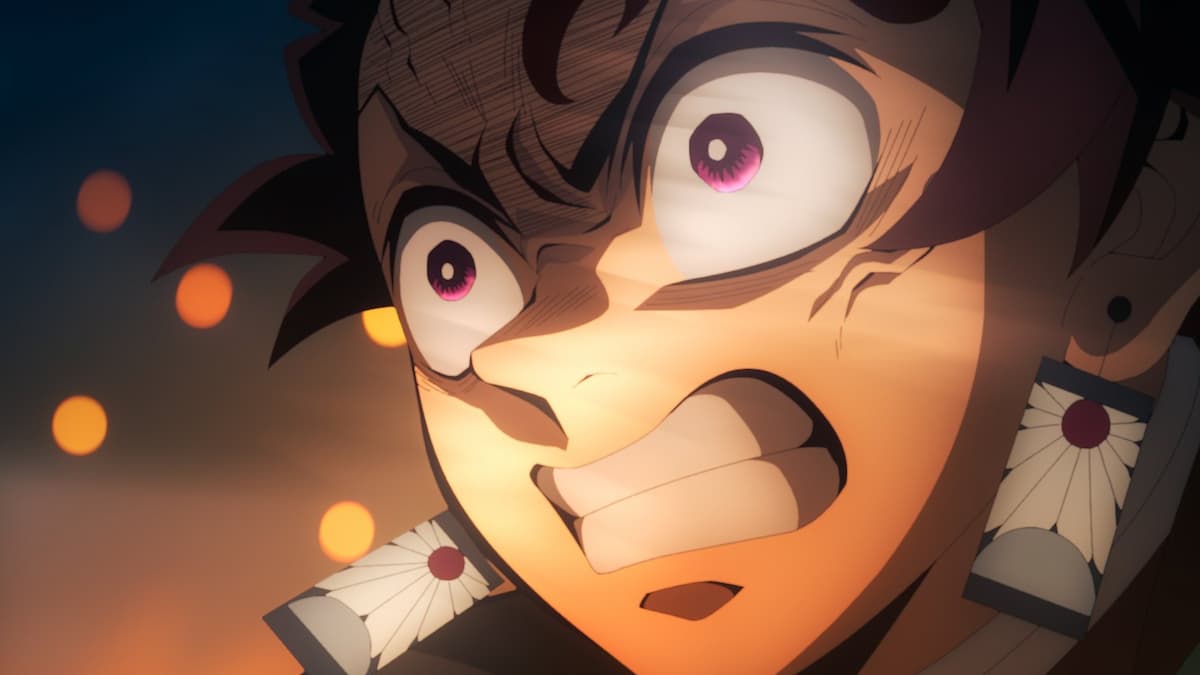The Final Episode of ‘Demon Slayer’s Hashira Training Arc Was Stunning

There are episodes of a TV series, and then there are episodes. The first thing I said after the season finale of Demon Slayer: Kimetsu no Yaiba‘s Hashira Training arc was, “Holy shit, that went fast.” That’s especially notable because the episode was 40 minutes long, nearly double the length of a normal episode.
Demon Slayer‘s cinematic nature is well-established. Ever since its first season, fans and animation enthusiasts alike have employed that word—cinematic—to describe the caliber of production company ufotable’s exceptional work. The camera angles, the choreography, the level of detail, the gorgeous background, the impressive ability to blend computer animation in a way that isn’t jarring—all of these have been in Demon Slayer since season one.
The series’ cinematic nature is also why the series has had multiple forays into the movie theater, and why the bold decision to sculpt Demon Slayer‘s finale into a film trilogy is ultimately justified.
With four seasons and a movie behind them, and three more films to soon follow, the season finale of the Hashira Training arc felt like the culmination of everything Demon Slayer has achieved so far. Both in terms of the series’ story and characters, and in the real-world terms of ufotable’s craft.
It was jaw-droppingly stunning. It was, indeed, cinematic.
A defense of the Hashira Training arc
Whether you liked it or not, there’s no denying that the Hashira Training was the slowest season of Demon Slayer. (And there won’t be another, so that’s definitive.) The arc—which was also the series’ shortest if you don’t count the Mugen Train arc—felt very much like the eye before the storm. Season after season of intense battles where characters could die or be maimed, nothing really happened. Tanjiro pushed a boulder pretty far. That was the climax of the first seven episodes.
That’s not to say it’s bad, although there were certainly a fair share of people online saying it was. The eye of the storm is necessary right before those stakes that Demon Slayer is known for ramp up to the highest they’ve ever been. It makes the climax more climactic, and plenty of other shonen series (Fullmetal Alchemist, for one) pull a similar trick. Maybe just slightly shorter, although this arc is only eight chapters in the manga.
More importantly, the Hashira Training arc served to illustrate and justify how far Tanjiro has come. Seeing him juxtaposed against the rank-and-file of the Demon Slayer Corps. gives us a very acute perspective on his growth. The last time Tanjiro mingled with his peers like this was during the spidery demon family fight, and he barely won. He was more or less on the same page as them then. He is not now, and that was important to see.
So when, during the finale, Tanjiro came rushing in with the Hashiras, his place there felt way more justified to me than if we hadn’t gone through the seven previous episodes. The buildup was worth it.
Cinematic, cinematic, cinematic
Spoilers ahead for episode 8 of Demon Slayer’s Hashira Training arc
The only criticism I could possibly say about episode eight of the Hashira Training arc is that maybe, just maybe, they milked Muzan’s walk up to the Ubuyashiki manor a little too much. For the rest of the episode’s runtime, my jaw was on the goddamn floor.
Most of the episode is a conversation between Kubutsuji Muzan and Ubuyashiki—both characters who have rarely had screen time. Before this episode, Ubuyashiki felt more like a stand-in for a paradigm than a character: the stoic master, generous, knowing, and quiet. But this long exchange, punctuated mainly by an eerie children’s song, colored both of these characters in significantly.
It also deeply endeared me to Amane, who in her complete half-smile stoicism showed herself to maybe be the biggest badass in the series.
All that quiet was brilliantly juxtaposed with Ubuyashiki’s engineered explosion and the roaring fire that ensued. In that fire, more obviously passionate characters came into the fray: Tamayo, whose thirst for revenge was incredibly animated in her expressions, and Gyomei, who looked deeply formidable surrounded by flame.
It’s exceedingly difficult to composite computer effects with hand-drawn animation and make it look seamless and convincing. Even ufotable, in previous Demon Slayer seasons, have not always been perfect—just better than most. But that fire in “The Hashira Unite” was incredible. It was beautiful and horrifying. It was a studio showing us they’ve mastered their craft.
And that’s before we even talk about the ground opening to drop every member of the Demon Slayer Corps into the Infinity Castle.
So many moments of “The Hashira Unite” feel like we are watching a studio at its peak. Animation, especially of this caliber, is difficult. So incredibly difficult. Even if you didn’t like the arc overall, ufotable deserves respect for their craft.
Have a tip we should know? tips@themarysue.com